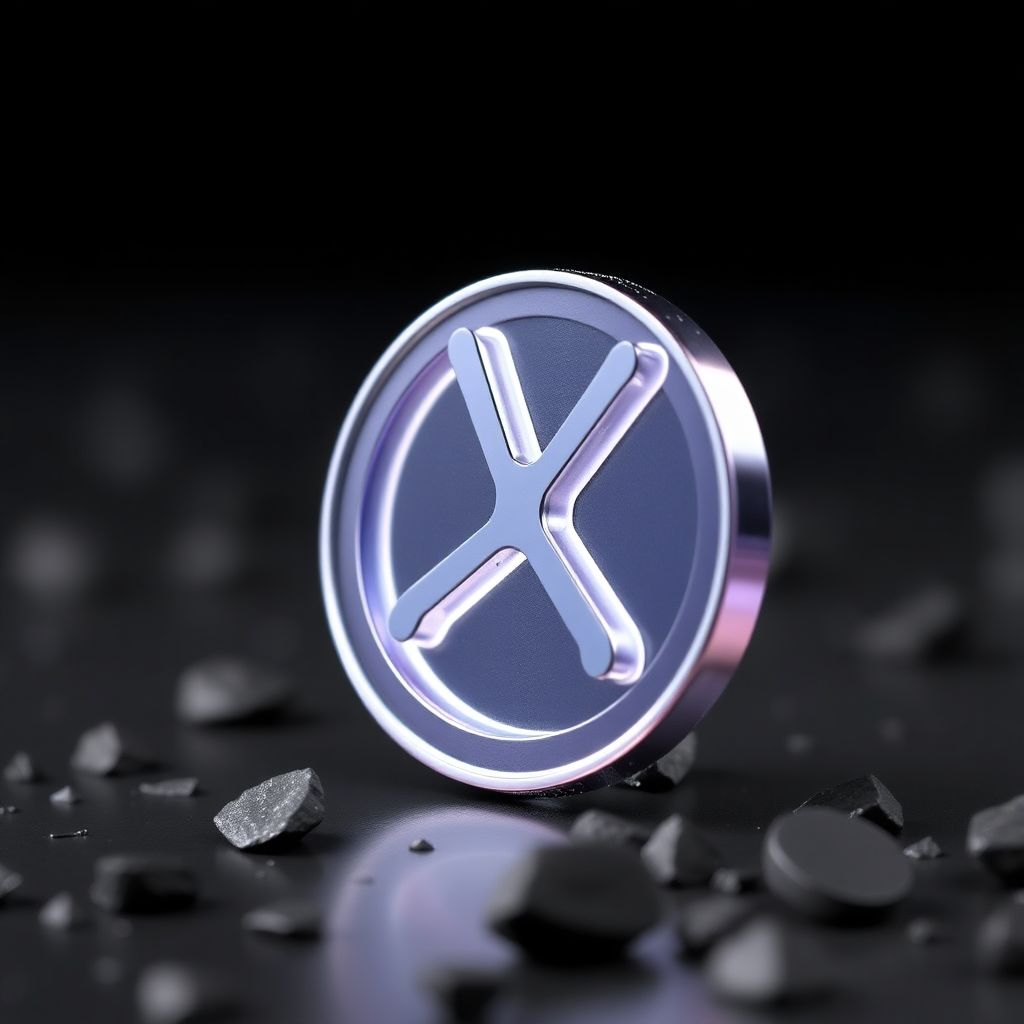XRP Continues to Struggle at $2.60, Prompting Investor Shift Toward Digitap ($TAP) Presale
XRP, once hailed as a revolutionary force in cross-border payments, is now facing increasing skepticism from investors. Despite an attempt to reclaim the $3 price point earlier this year, XRP has repeatedly failed to break through critical resistance levels. Most recently, the token has been unable to surpass the $2.60 ceiling, and bearish sentiment is growing stronger. The price is currently trading below its 200-day moving average—a technical indicator often seen as a warning sign of sustained downtrends.
This stagnation has triggered a wave of frustration among holders. Large investors, often referred to as “whales,” appear to be reallocating their assets, with growing interest in emerging alternatives. One of the most notable beneficiaries of this shift is Digitap ($TAP), a new entrant in the decentralized finance (DeFi) and digital banking space. In a short span, Digitap has amassed over $1.2 million in presale funding, a clear signal that confidence is shifting toward more agile and innovative projects.
Digitap isn’t just another altcoin—it represents a new generation of fintech infrastructure. Designed as an omni-bank, the platform unifies fiat currencies, cryptocurrencies, and stablecoins under a single interface. Its core appeal lies in its seamless, mobile-first user experience that eliminates the complexity typically associated with crypto transactions. At its core is an AI-driven routing engine that intelligently chooses the most efficient and cost-effective transaction pathway—be it a blockchain network or a traditional banking rail.
This hybrid architecture allows users to make payments with minimal fees and near-instant finality, a stark contrast to XRP’s increasingly outdated model. Digitap has already launched a Visa-compatible payment card and supports both Apple Pay and Google Pay, enabling users to spend crypto at physical locations worldwide. This level of real-world utility is a game-changer and is quickly becoming a benchmark for next-gen financial platforms.
While Ripple continues to focus on institutional adoption, Digitap has taken a consumer-first approach. Instead of asking banks and remittance firms to overhaul their systems, Digitap integrates existing infrastructures, making it compatible with both traditional and decentralized financial ecosystems. This strategy allows for rapid scalability and adaptation to emerging technologies. For instance, if a new blockchain launches with lower fees or faster settlement, Digitap can seamlessly integrate it without altering the front-end user experience.
The platform’s tokenomics also set it apart. Half of the platform’s profits are returned to the community—split evenly between token burns, which reduce supply and increase scarcity, and staking rewards, which incentivize long-term holding. Currently priced at $0.0268, the $TAP token is expected to rise to $0.0297 in the upcoming presale round, making it attractive for early adopters.
Analysts have started to label Digitap as “XRP 2.0,” not just because of its technological advancements, but because it more effectively delivers on the original promise of frictionless global payments. With thousands of users already onboard and a rapidly growing ecosystem, Digitap is positioning itself as one of the most disruptive financial technologies of 2025.
The broader crypto landscape is also evolving. Chains like Plasma and Tempo are gaining traction due to their stablecoin-focused architecture and ultra-low fees. These platforms offer real-time settlement and are increasingly being adopted by major global players like Western Union. As the market shifts toward these efficient, consumer-oriented solutions, XRP’s relevance continues to be questioned.
Digitap’s rapid fundraising success is not just a sign of investor enthusiasm; it reflects a broader trend in crypto markets. Presales are often an early indicator of which narratives are gaining traction. In this case, the demand for seamless, mobile-first banking solutions is clearly resonating. As the line between traditional finance and crypto continues to blur, platforms that can bridge the gap without complicating the user experience are likely to dominate.
Moreover, Digitap’s focus on financial inclusivity is a major draw. By supporting both crypto-native users and those new to digital assets, it serves as a gateway to a more integrated financial future. The platform’s ability to onboard users without requiring technical expertise makes it especially appealing in emerging markets, where mobile banking adoption is high but access to sophisticated financial tools remains limited.
Security and compliance are also at the forefront of Digitap’s development. The team has implemented advanced encryption standards and is actively pursuing regulatory clarity to ensure legal operability across jurisdictions. This proactive stance adds another layer of credibility and is likely to attract institutional investors in the near future.
In addition to its core banking functionalities, Digitap is exploring partnerships with merchants and service providers to expand its ecosystem. The goal is to create a full-stack financial environment where users can not only manage assets but also access lending, investing, and insurance services—all from a single app. This holistic approach could redefine what users expect from a digital financial platform.
As 2025 unfolds, the battle for dominance in the cross-border and digital banking sector is intensifying. XRP, with all its legacy and institutional ties, is at risk of becoming obsolete unless it evolves quickly. In contrast, Digitap is emerging as a nimble, user-centric alternative that aligns with the needs of today’s fast-paced digital economy.
The shift from XRP to Digitap among investors may not just be a passing trend—it could mark the beginning of a larger transformation in how global value transfer is conducted. With a robust roadmap, strong community support, and cutting-edge technology, Digitap is making a compelling case to become the go-to platform for next-generation banking.

